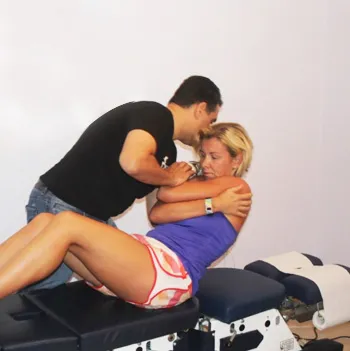
403
Sorry!!
Error! We're sorry, but the page you were looking for doesn't exist.
Improve Your Posture At Work: Dubai Chiropractors Share Simple Tips
(MENAFN- Mid-East Info) Improving posture at work is straightforward with ergonomic setup, movement breaks, and simple strengthening drills endorsed by Dubai chiropractors , leading to less neck and back strain during long desk hours. The guidance below compiles practical, clinic‐tested tips and brief routines that fit busy office days in Dubai.
Why posture matters Poor posture increases the load on the neck, upper back, and lower spine, which may contribute to chronic pain, stiffness, and frequent tension‐type headaches over time. Misalignment can also reduce mobility and breathing efficiency, affecting day‐to‐day comfort and work performance in desk‐based roles common across Dubai. Also Check: Can Chiropractors Actually Help Your Posture? The Complete Guide Set up the desk A supportive chair with adjustable height and lumbar support helps maintain the natural curve of the lower back during prolonged sitting. Position the monitor at eye level and keep the keyboard and mouse within easy reach to avoid shrugging the shoulders or poking the head forward. Small changes to desk layout often deliver quick relief and promote better alignment through the workday.
Gentle head retractions (chin tucks) to counter“text neck” and screen time strain.
Standing breaks: even weight across both feet, soft knees, and tall chest to avoid swayback. Microbreak routine Movement breaks every 30 to 60 minutes reduce stiffness, support circulation, and reset alignment with minimal downtime. One to two minutes of targeted mobility work at the desk can ease muscle tension and prevent slump‐and‐strain cycles. Brief walks to a printer, meeting room, or hydration station further break up static postures common in open‐plan offices.
Why posture matters Poor posture increases the load on the neck, upper back, and lower spine, which may contribute to chronic pain, stiffness, and frequent tension‐type headaches over time. Misalignment can also reduce mobility and breathing efficiency, affecting day‐to‐day comfort and work performance in desk‐based roles common across Dubai. Also Check: Can Chiropractors Actually Help Your Posture? The Complete Guide Set up the desk A supportive chair with adjustable height and lumbar support helps maintain the natural curve of the lower back during prolonged sitting. Position the monitor at eye level and keep the keyboard and mouse within easy reach to avoid shrugging the shoulders or poking the head forward. Small changes to desk layout often deliver quick relief and promote better alignment through the workday.
-
Chair height: hips level with or slightly above knees, feet flat on the floor or on a footrest, and backrest supporting the lumbar curve.
Screen placement: top of the screen near eye level at arm's length, with the camera centered to discourage chin jut.
Input devices: keep keyboard and mouse close, elbows near the torso, and wrists in a neutral line with the forearm.
Lighting: reduce glare to prevent craning the neck toward the screen or leaning in to read small text.
Gentle head retractions (chin tucks) to counter“text neck” and screen time strain.
Standing breaks: even weight across both feet, soft knees, and tall chest to avoid swayback. Microbreak routine Movement breaks every 30 to 60 minutes reduce stiffness, support circulation, and reset alignment with minimal downtime. One to two minutes of targeted mobility work at the desk can ease muscle tension and prevent slump‐and‐strain cycles. Brief walks to a printer, meeting room, or hydration station further break up static postures common in open‐plan offices.
-
Chin tucks: 10 slow reps to align the cervical spine.
Scapular squeezes: 10–15 gentle squeezes to open rounded shoulders.
Seated hip flexor shift: slide to chair edge, extend one leg behind slightly to ease hip tightness.
Hamstring scoots: extend one leg, hinge forward lightly to relieve posterior chain tension.
-
Wall angels: 8–12 reps to mobilize the thoracic spine and open the chest.
Bird‐dog: 6–10 slow reps per side to train spinal stability and hip control.
Dead bug: 8–12 controlled reps to reinforce core bracing.
Glute bridge: 10–15 reps to reduce low‐back compensation during sitting and lifting.
-
Footwear: select adequate arch support and cushioning for daily walking and standing.
Lifting: keep the spine neutral, hinge at hips and knees, and avoid twisting under load.
Sleep setup: avoid prolonged tummy sleeping, and use pillow height that matches body size.

Legal Disclaimer:
MENAFN provides the
information “as is” without warranty of any kind. We do not accept
any responsibility or liability for the accuracy, content, images,
videos, licenses, completeness, legality, or reliability of the information
contained in this article. If you have any complaints or copyright
issues related to this article, kindly contact the provider above.


















Comments
No comment